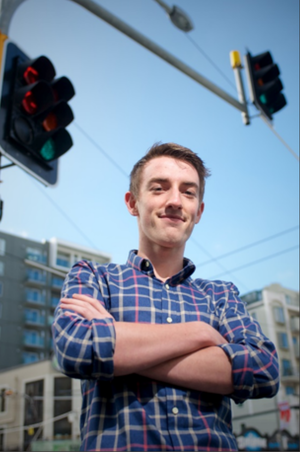Saving money and the environment at the lights
09 May 2014 - 10:08:57 in Research
James McCann is a software engineer with drive. During his final year of study at Victoria University of Wellington, James helped to develop a more cost effective model for New Zealand’s traffic lights.
Under the supervision of Dr Paul Teal, a senior lecturer in the School of Engineering and Computer Science, James created a model called the Priority Based Traffic Control system (PBTC).
But it’s not all about numbers for this 22-year-old from Timaru—he says he chose this as his fourth year project because he’s interested in how environmental and economic issues can be solved in tandem.
“If vehicles are driven more efficiently, they are more economic to run and create less pollution,” says James.
The Victoria graduand says there is a cost of waiting at an intersection, whether that’s a loss of productivity from being late for work or even just additional petrol costs. PBTC helps to minimise that cost by controlling traffic lights to make traffic flows more efficient.
Under the current system, traffic lights are reactive, with the duration of lights based on the number of cars which previously drove through the intersection. James’ model, however, is proactive, looking ahead to the cars approaching the intersection rather than the ones which have already passed through.
PBTC is based on having a controller at the intersection which would receive data and GPS coordinates transmitted wirelessly from vehicles. It would then look ahead for the best place, economically, for the lights to turn red. The system introduces a priority rating which adds up the priorities of all cars approaching the intersection and ensures the higher priority side gets a green light first.
“A large truck would have a higher priority rating than a car. A truck barrelling down the motorway costs much more to stop than a car because it takes longer to stop and start, uses more petrol, produces more exhaust and creates more wear on the road,” explains James.

